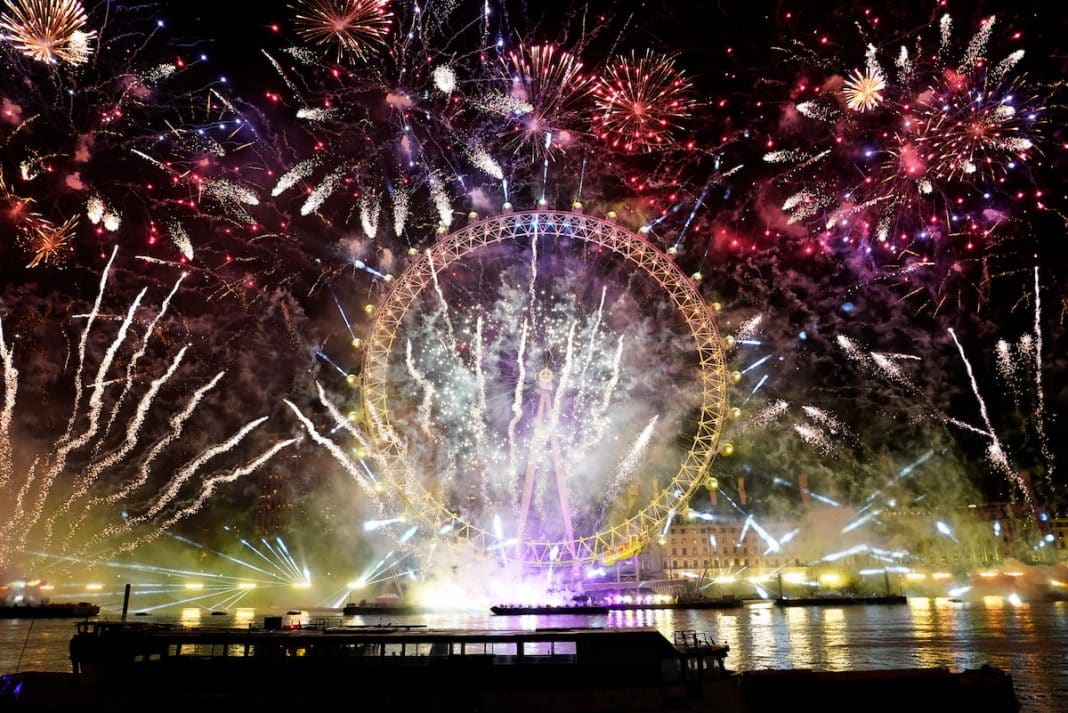The world has welcomed the new year with a packed party in New York’s Times Square and fireworks soaring above European capitals, while hoping for an end to the war in Ukraine and a return to post-COVID normality in Asia.
It was a year marked by the conflict in Ukraine, economic stresses and the effects of global warming. But it was also a year that saw a dramatic soccer World Cup, rapid technological change and efforts to meet climate challenges.
After 2023 descended upon Asia, Africa and Europe, New York rang in the new year in typical style as thousands corralled themselves into pens under pouring rain in Times Square, waiting hours for the ball to drop.
A 3.7-metre geodesic sphere made of Waterford crystal triangles slid down a pole atop a 25-storey building to mark the calendar change.
Meanwhile, millions watched the accompanying musical acts and countdown on TV from dry and warm living rooms around the world.
Earlier, across the Atlantic, the London Eye turned blue and yellow in solidarity with Ukraine as fireworks saw in midnight in the British capital.
The celebration, which London’s mayor had branded the biggest in Europe, also referenced Queen Elizabeth II, who died in September, the red and white of England’s soccer team, and the rainbow colours of the LGBTQI event Pride, which had its 50-year anniversary in 2022.
For Ukraine, there seemed to be no end in sight to the fighting that began when Russia invaded in February.
Numerous blasts were heard in Kyiv and elsewhere in Ukraine and air raid sirens wailed across the country in the early hours of New Year’s Day.
On Saturday, Russia fired a barrage of cruise missiles that Ukraine’s human rights ombudsman described as “Terror on New Year’s Eve”.
Evening curfews remained in place nationwide, making the celebration of the beginning of 2023 impossible in many public spaces. Several regional governors posted messages on social media warning residents not to break restrictions.
In Kyiv, though, people gathered near the city’s central Christmas tree as midnight approached.
“We are not giving up. They couldn’t ruin our celebrations,” said 36-year-old Yaryna, who was celebrating with her husband, tinsel and fairy lights wrapped around her.
In a video message to mark the New Year, Ukrainian President Volodymyr Zelenskiy, Time Magazine’s 2022 Person of the Year, said: “I want to wish all of us one thing – victory.”
Russian President Vladimir Putin devoted his New Year’s address to rallying the Russian people behind his troops. Festivities in Moscow were muted, without the usual fireworks on Red Square.
Elsewhere in Europe, fireworks exploded over the Parthenon in Athens, the Brandenburg Gate in Berlin, and the Arc de Triomphe in Paris, where crowds gathered on the Champs-Elysees avenue to watch the French capital’s first New Year fireworks since 2019.
But, like many places, the Czech capital Prague was feeling the pinch economically and so did not hold a fireworks display.
“Holding celebrations did not seem appropriate,” said city hall spokesman Vit Hofman.
Earlier, Australia kicked off the celebrations with its first restriction-free New Year’s Eve after two years of COVID-19 disruptions. Sydney welcomed the New Year with a typically dazzling fireworks display, which for the first time featured a rainbow waterfall off the Harbour Bridge.
In China, rigorous COVID restrictions were lifted only in December as the government abruptly reversed its “zero-COVID” policy, a switch that has led to soaring infections and meant some people were in no mood to celebrate.
While China’s official death toll is barely ticking higher, UK-based health data firm Airfinity estimated last week that around 9000 people in the country are probably dying each day from the coronavirus.



